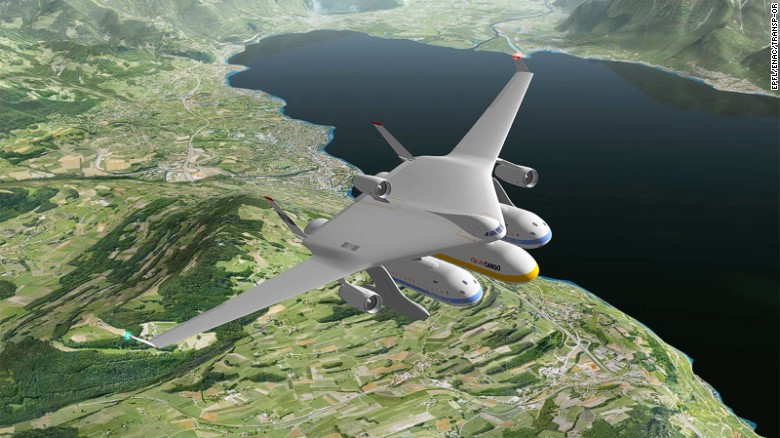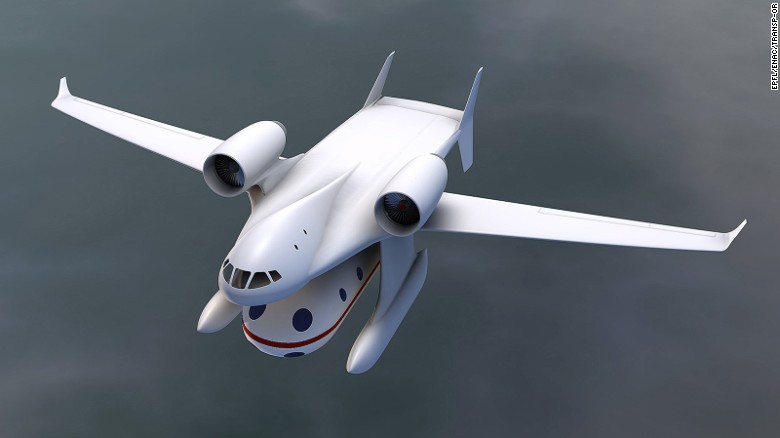
(CNN)Hypersonics, electric propulsion, triple deckers -- think you've seen everything when it comes to new aircraft concepts?
Well just hold on a second, here comes the pod plane.
It's yet another revolutionary aircraft design, this one created by Switzerland's Federal Polytechnic Institute, that aims to transform the way people and cargo travel.
While the concept might be boundary-pushing, the inspiration is mundane.
The humble shipping container.
Futuristic and disruptive
Despite, or perhaps because of, its simple design, the shipping container is one of the most disruptive inventions of the past century.
It allows cargo to be moved cheaply from one mode of transport to another and has facilitated the development of the complex supply chains all modern economies rely on.
Transfer from truck to giant cargo ship to freight train is seamless and the container can be used again and again, drastically reducing the cost of long-distance shipping.
That's the magic of inter-modal transport -- and it's something the futuristic and potentially game-changing Clip-Air concept hopes to emulate.
Clip-Air is composed of two elements.
There's the flying component, including airframe, cockpit and engines.
Then there's the capsules, a number of detachable pods that can act as cabin or cargo hold, depending on the chosen configuration.
The airframe is based on a flying-wing concept, reminiscent of a stealth bomber. Some may even find some similarities to the X-48, an experimental pilotless aircraft developed for NASA a decade ago.
Versatile design

Clip-Air modules are designed to be carried by a variety of vehicles.
A pair of long metal legs protruding from each side of the flying wing, and containing the landing wheels mechanism, keep the airframe high above the ground.
The height is to allow for capsules to be hung from the belly of the aircraft, not unlike the way warplanes carry bombs and missiles.
These capsules could be made to carry either passengers or cargo.
In fact, while Clip-Air's speed and range is expected to be on a par with that of modern mid-sized airliners, the beauty of the concept rests precisely upon the versatility provided by the capsules.
These modules can be adapted to simultaneously carry a wide range of cargo and passenger combinations.
One single aircraft would be able to perform multiple roles.
The capsules can also be easily attached and detached from the airframe, making it possible for aircraft to achieve very quick rotations on the ground.
Claudio Leonardi, who manages the Clip-Air project at the Federal Polytechnic Institute in Lausanne, says this'll allow operators to maximize use of the airframe, the most expensive component.

